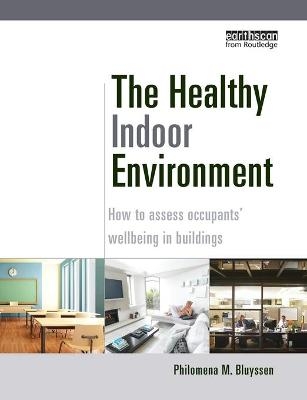
The Healthy Indoor Environment
Routledge (Verlag)
978-1-032-09908-8 (ISBN)
Despite policy directives, standards and guidelines, indoor environmental quality is still poor in many cases. The Healthy Indoor Environment, winner of the 2016 IDEC Book Award, aims to help architects, building engineers and anyone concerned with the wellbeing of building occupants to better understand the effects of spending time in buildings on health and comfort. In three clear parts dedicated to mechanisms, assessment and analysis, the book looks at different indoor stressors and their effects on wellbeing in a variety of scenarios with a range of tools and methods.
The book supports a more holistic way of evaluating indoor environments and argues that a clear understanding of how the human body and mind receive, perceive and respond to indoor conditions is needed. At the national, European and worldwide level, it is acknowledged that a healthy and comfortable indoor environment is important both for the quality of life, now and in the future, and for the creation of truly sustainable buildings. Moreover, current methods of risk assessment are no longer adequate: a different view on indoor environment is required.
Highly illustrated and full of practical examples, the book makes recommendations for future procedures for investigating indoor environmental quality based on an interdisciplinary understanding of the mechanisms of responses to stressors. It forms the basis for the development of an integrated approach towards assessment of indoor environmental quality.
Philomena M. Bluyssen started as a full Professor of Indoor Environment at the Delft University of Technology in 2012 after more than two decades working for TNO in Delft, The Netherlands. She has written more than 170 publications and won the Choice Award for Outstanding Academic Titles of 2010 for the Indoor Environment Handbook (also published by Earthscan from Routledge).
Preface List of Symbols, Acronyms and Abbreviations Part 1: Mechanisms 1. Human model 2. Bodily Processes 3. Stress Response Mechanisms Part 2: Assessment 4. Indicators 5. Research Methods and Analysis 6. Data Collection Techniques Part 3: Analysis 7. Needs and Opportunities 8. Performance Indicators 9. Scenarios Annex A Questionnaires Annex B Checklists Annex C Indicators References Index
| Erscheinungsdatum | 01.07.2021 |
|---|---|
| Zusatzinfo | 130 Illustrations, color |
| Verlagsort | London |
| Sprache | englisch |
| Maße | 189 x 246 mm |
| Gewicht | 900 g |
| Themenwelt | Naturwissenschaften ► Biologie ► Ökologie / Naturschutz |
| Technik ► Architektur | |
| Technik ► Bauwesen | |
| Technik ► Umwelttechnik / Biotechnologie | |
| Wirtschaft ► Betriebswirtschaft / Management ► Rechnungswesen / Bilanzen | |
| Betriebswirtschaft / Management ► Spezielle Betriebswirtschaftslehre ► Immobilienwirtschaft | |
| ISBN-10 | 1-032-09908-9 / 1032099089 |
| ISBN-13 | 978-1-032-09908-8 / 9781032099088 |
| Zustand | Neuware |
| Informationen gemäß Produktsicherheitsverordnung (GPSR) | |
| Haben Sie eine Frage zum Produkt? |
aus dem Bereich


